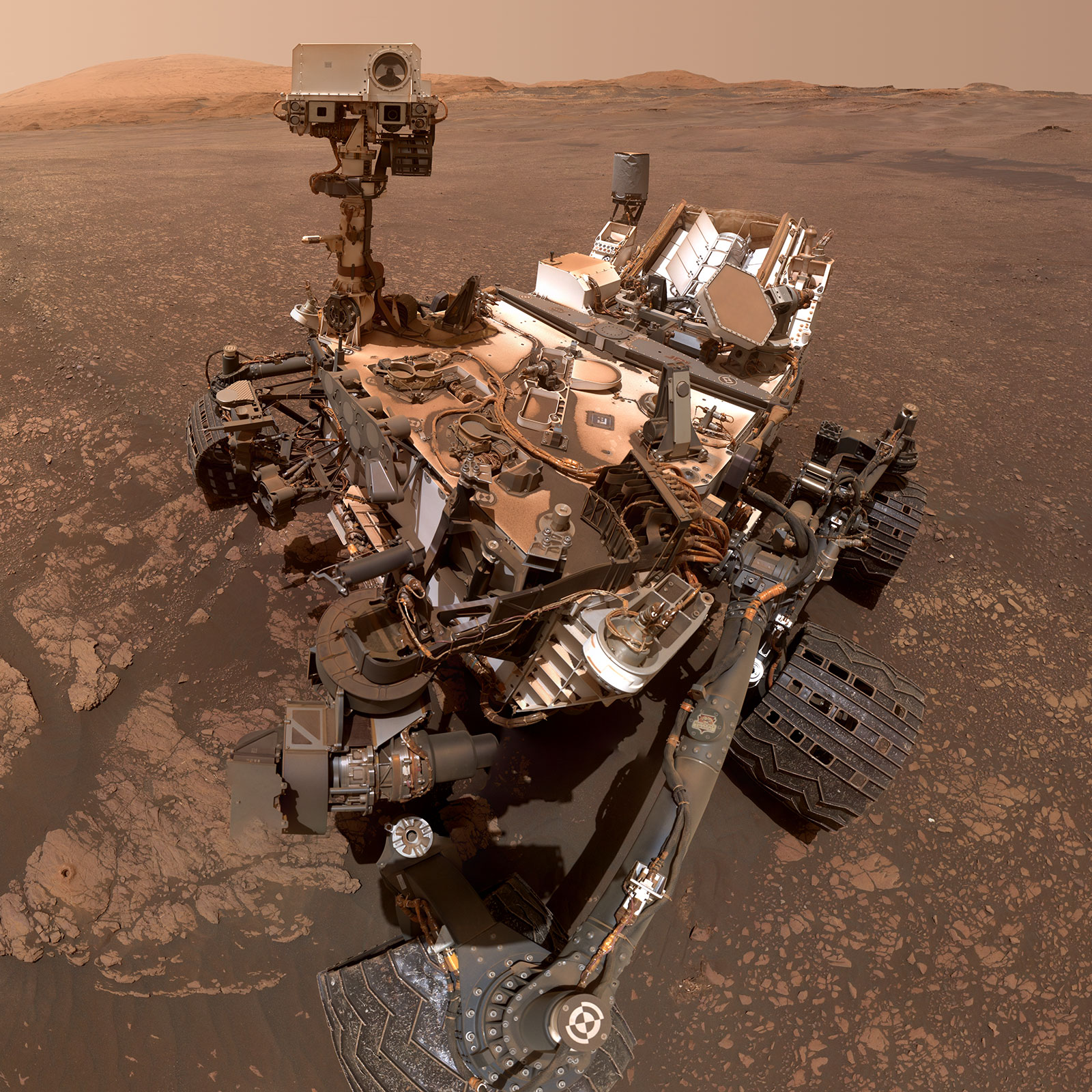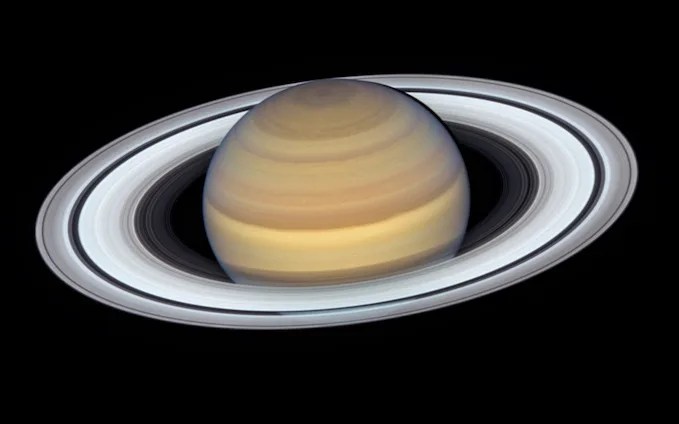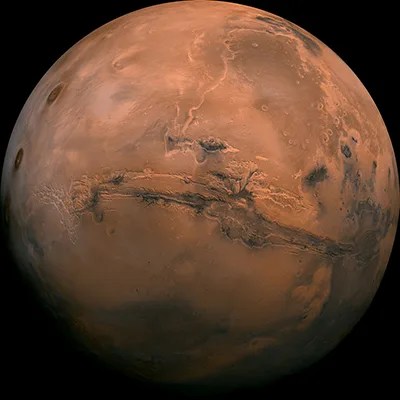Mars Global Surveyor
Science Highlights
Mars Global Surveyor has contributed a multitude of findings, including signs of past, persistent water – such as an ancient delta – and currently active water features in the gullies of canyon walls.
Repeatable Weather Patterns
Each day the Mars Global Surveyor camera operated, it collected images that were used to build a daily global map. These maps formed a record of changing meteorological conditions, revealing some dust storm patterns. Some such storms repeated in the same location within a week or two of the time they occurred in the previous year. In addition, local disturbances and dust devils may start up at any time in spring and continue until Martian autumn.
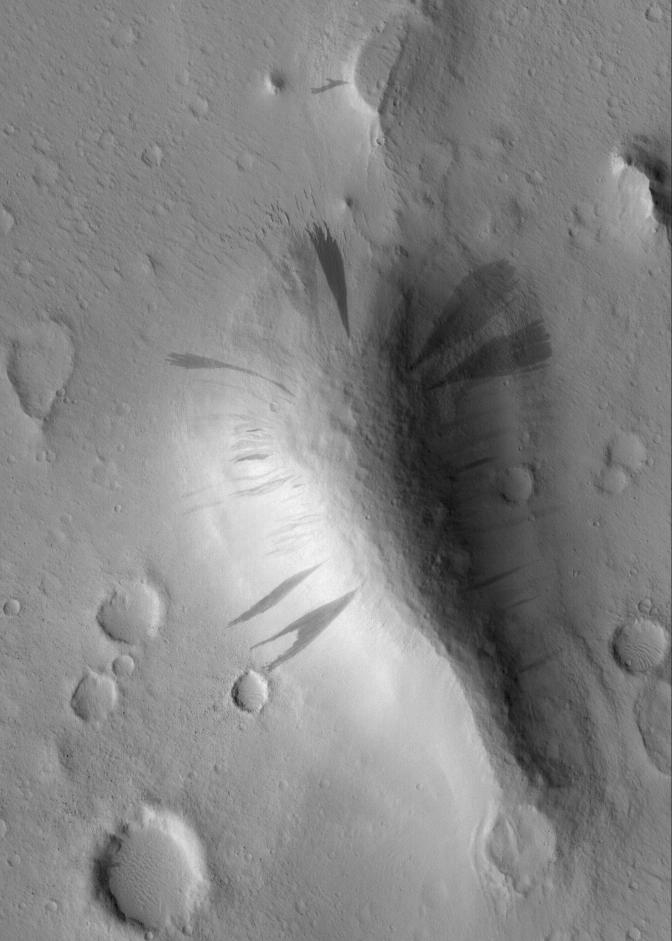
Water Features
A panoply of high-resolution images showed gullies and debris flows. These images suggest that occasional sources of liquid water, similar to an aquifer, were present at or near the Martian surface – even in relatively recent times.
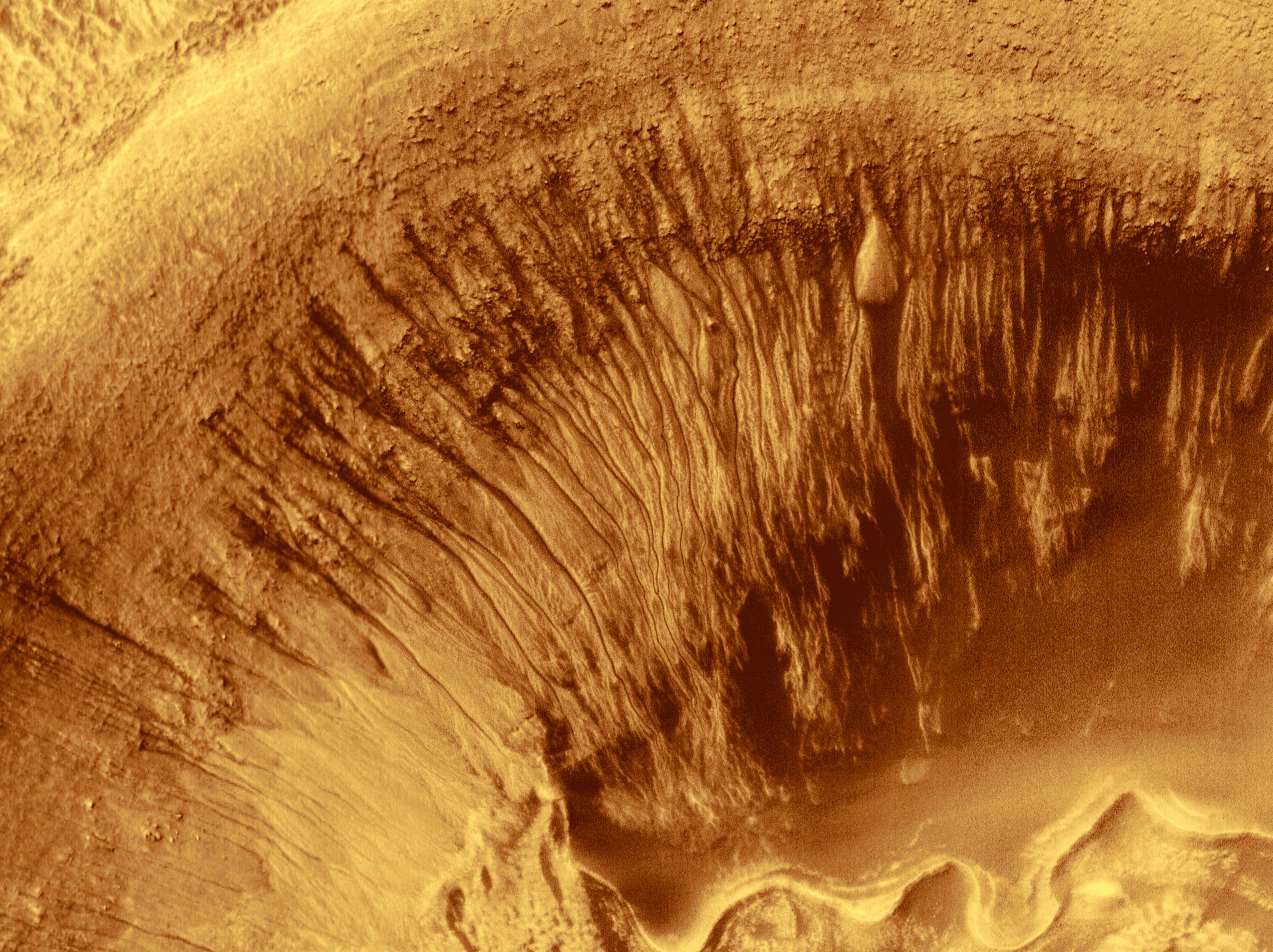
Mars is Dynamic
Numerous observations over several years showed that Mars' history includes seasonal and long-term change. The spacecraft viewed gully formation, new boulder tracks, recently formed impact craters, and diminishing amounts of carbon-dioxide ice within the south polar cap.
Magnetic Discoveries
Magnetometer readings showed that while Mars has no global magnetic field, it does have localized magnetic fields in areas of its crust.
Meteoroid History
Temperature data and closeup images of the Martian moon Phobos determined that the moon is covered by powdery material at least 3 feet (1 meter) thick – the pulverized output of millions of years of meteoroid impacts.
Other Science
The mission yielded the first 3D views of Mars' north polar ice cap. Radio transmissions refracted by the Martian atmosphere enabled scientists to create vertical profiles of atmospheric temperature and pressure. Spacecraft accelerations due to gravity helped scientists better understand the Mars interior.

